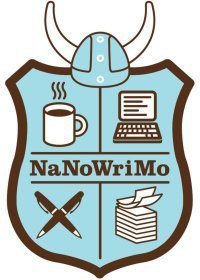Jacqui Murray's Blog, page 178
November 25, 2012
Writer’s Tip #29: No Exclamation Points! Please!
 When you read your story, does it sound off, maybe you can’t quite put your finger on it, but you know you’ve done something wrong? Sometimes–maybe even lots of times–there are simple fixes. These writer’s tips will come at you once a week, giving you plenty of time to go through your story and make the adjustments.
When you read your story, does it sound off, maybe you can’t quite put your finger on it, but you know you’ve done something wrong? Sometimes–maybe even lots of times–there are simple fixes. These writer’s tips will come at you once a week, giving you plenty of time to go through your story and make the adjustments.
Today’s tip: No exclamation points!
Few published novels use exclamation points. It seems like they should, doesn’t it? We-all exclaim a lot in life and drama seems to require heightened emotion.
No. Don’t fall for it. Google this if you don’t believe me (which, I didn’t the first time I ran across it). If you use exclamation points, you look like an amateur.
–Click to have Writer’s Tips delivered to your email box

Jacqui Murray is the author of the popular Building a Midshipman , the story of her daughter’s journey from high school to United States Naval Academy. She is webmaster for six blogs, an Amazon Vine Voice book reviewer, a columnist for Examiner.com , Editorial Review Board member for Journal for Computing Teachers, Cisco guest blog,Technology in Education featured blogger, IMS tech expert, and a bi-weekly contributor to Write Anything. In her free time, she is editor of a K-6 technology curriculum, K-8 keyboard curriculum, creator of two technology training books for middle school and six ebooks on technology in education. Currently, she’s editing a thriller that should be out to publishers next summer. Contact Jacqui at her writing office or her tech lab, Ask a Tech Teacher.
Filed under: grammar and spelling, writers resources, writers tips Tagged: Exclamation mark, grammar, writers resources, writers tips


November 18, 2012
Happy Thanksgiving Week

Road trip!
I’m taking this week off. I’ll be driving my daughter cross-country to her new home in Ft. Meade Maryland. Love those road trips!
I’ll see you in a week!
Jacqui Murray is the author of Building a Midshipman , the story of her daughter’s journey from high school to United States Naval Academy. She is webmaster for six blogs, an Amazon Vine Voice book reviewer, a columnist for Examiner.com and TeachHUB, Editorial Review Board member for Journal for Computing Teachers, Cisco guest blog,Technology in Education featured blogger, IMS tech expert, and a bi-weekly contributor to Write Anything. In her free time, she is editor of a K-6 technology curriculum, K-8 keyboard curriculum, creator of two technology training books for middle school and six ebooks on technology in education. Currently, she’s editing a thriller that should be out to publishers next summer. Contact Jacqui at her writing office or her tech lab, Ask a Tech Teacher.
Filed under: blogs Tagged: road trip, thanksgiving


November 15, 2012
Book Review: Bedfellows
by Bob Garfield
My rating: 4 of 5 stars
Bob Garfield’s Bedfellows (Thomas & Mercer 2012) is not what you’d expect from a title that promises a mob-laced thriller. It’s humorous, personal, and sometimes long-winded with none of the in-your-face villainy and violence that usually typifies mobs stories. The summary in the forward says it all:
A Neighborhood. A Mob. A Girl. A Boy. Another Girl. Another Mob. A HItman. A Hitwoman. A recession. A Chiropractor. And a Twist.
That’s all it took for me to curl into my double-wide reading chair, tea at my elbow, and dig in. A down-and-out Wall Street exec opens a mattress store in a mob-controlled beach town. He talks the mob enforcer out of making him pay the monthly protection money, falls in love with the don’s daughter, and gets recruited to help stop a violent Russian mob that wants the town’s ‘enforcement’ business.
Garfield, in what seems to be his fiction debut (before this, he wrote advertising-related tomes), does great character sketches. I can see Jack Schiavone as Mr. Mattress, Big Manny as the mob’s second-in-command, Little Manny as his inept but passionate son. There are twenty-four character introductions in the first sixty-one pages, each sketch made memorable with humor and clever phrases, enough so that I manage to keep track of what normally would be an unwieldy cast for a thriller.
The plot is a late bloomer. By page eighty-two, I was wondering if the story might be merely a humorous romp through the not-so-seamy underbelly of a failing mob town (which doesn’t interest me). By page one hundred twenty, I got a sniff of the plot and then it was off like a hitman’s 9mm bullet. The action is clever, unusual, the storyline unique, and the conclusion satisfying. I like the retro chapter headings (also used by Carsten Stroud in Niceville) like ‘Kick in the Head’ and ‘Yes and No’. Garfield has an authentic and quirky sense of humor in his story telling. Consider:
Mr. Mattress puzzled over: if the plot was as Doe incautiously described, how in the world would the gang that couldn’t hire straight get the Russian menace on a chiropractor’s table?
He looked like Bobby Kennedy at a costume party, dressed as the lunar lander
The don then did something that everybody in the move does but you hardly ever see in real life. He screwed up his face and pinched the bridge of his nose. Fatigue, physical and nervous, was taking its toll.
My recommendation: Enjoy the first hundred pages knowing that soon thereafter the action is going to run away with your time.
Jacqui Murray is the author of Building a Midshipman , the story of her daughter’s journey from high school to United States Naval Academy. She is webmaster for six blogs, an Amazon Vine Voice book reviewer, a columnist for Examiner.com , Editorial Review Board member for Journal for Computing Teachers, Cisco guest blog, Technology in Education featured blogger, IMS tech expert, and a bi-weekly contributor to Write Anything. In her free time, she is editor of a K-6 technology curriculum, K-8 keyboard curriculum, creator of two technology training books for middle school and six ebooks on technology in education. Currently, she’s editing a thriller that should be out to publishers next summer. Contact Jacqui at her writing office or her tech lab, Ask a Tech Teacher.
Filed under: book reviews Tagged: book reviews, thrillers


November 14, 2012
Check out my Article Over at Write Anything
I have an interesting article over on Write Anything. If you can’t make it–no worries. I’ll post it here soon.
Jacqui Murray is the editor of a K-6 technology curriculum, K-8 keyboard curriculum, creator of two technology training books for middle school and six ebooks on technology in education. She is the author of Building a Midshipman , the story of her daughter’s journey from high school to United States Naval Academy. She is webmaster for six blogs, an Amazon Vine Voice book reviewer, a columnist for Examiner.com , Editorial Review Board member for Journal for Computing Teachers, Cisco guest blog, Technology in Education featured blogger, IMS tech expert, and a bi-weekly contributor to Write Anything. Currently, she’s editing a thriller that should be out to publishers next summer. Contact Jacqui at her writing office or her tech lab, Ask a Tech Teacher.
Filed under: business, writers Tagged: agents, guest post, writers

November 13, 2012
5 Simple Ways to Bring Your Story to Life
 I’m talking about five little details you take for granted, but account for half of your connection to the world: Sensory detail–
I’m talking about five little details you take for granted, but account for half of your connection to the world: Sensory detail–
taste
touch
visual
smell
audio
As a writer, it puts the snap in your story, realism in a cardboard setting, the visceral vehemence in a thriller. Sensual feedback is to readers what WD40 is to locks. No matter how flowery your prose, it requires the color of life, communicated by what characters hear from sights that can’t been seen, conclude from body language that belies a friend’s words, smell in otherwise pristine surroundings, touch and bump and nudge in their frantic race through the plot. Take your characters over the sensory cliff. Douse your setting in sound and color. Offer this window on reality to your readers and you move your writing to the next level.
I recently reviewed The Intercept, debut novel of Dick Wolf, acclaimed producer of the Law and Order franchise, one of the most successful brands in TV history. I snapped it up from my Amazon Vine list making the assumption that anyone who could mastermind L&O would write a blockbuster.
Maybe not.
His characters were fascinating–strong, heroic, flawed the way we like them in mystery thrillers. Plotting was without equal, exactly as I’d expect from an award-winning screen writer/director/producer. Still, as I read the book, I felt untouched by events, as though I was watching. At first, I thought it was his choice of POV–omniscient third person–but came to realize it was something more fundamental. His characters were flat despite sneak peaks into their personal lives and backstory on events. Even when I was in their heads, I didn’t know how the world around them affected them. What did they smell? What scurried through their peripheral vision? Did their stomach churn when the sweat on the Bad Guy’s brow made it clear he was lying? Yes, I’ll read his next book, but Wolf is no Lee Child or Brad Thor.
Have you ever watched two people from a distance far enough you couldn’t hear their words, and still clearly understood they were upset, or worried, or madly in love? Every place has its own atavistic structure. Maybe it’s a peculiar mixture of organic growth and human industry. Maybe it’s a color out of sync with the rest of a building, or the faint sound of music from a rooftop party. That’s what I’m talking about. How do those details affect the way you react to a story, in a way mere words could never hope to accomplish?
Consider:
Sounded like a chicken being strangled
The soft snick of a knife opening
ice clinked gently in a glass
A sound that might have been the extinguishing of my hopes
mouth-watering aroma
if the wind was right, I could catch the scent of sauerbraten wafting across the street from Jonas Schmidt’s
smell of burned rubber and hot brakes and gas and oil
Smelled of desperation accumulated over the years
Somewhere a dog barked
fire hissed softly and the log shifted with a little shower of sparks
You’re there, in the scene, your emotions tingling. Your focus may be on the gun in the antagonist’s hand, but sensory detail provides the rich texture of real events.
William Strunk wrote in Elements of Style, the tiny tome that should be in every writer’s library:
“The surest way to arouse and hold the attention of the reader is by being specific, definite and concrete.”
Janet Burroway explains what that means:
“A detail is ‘definite’ and ‘concrete’ when it appeals to the senses. It should be seen, heard, smelled, tasted, or touched.
Noah Lukeman discusses the development of settings in his best-selling writer’s how-to book, The First Five Pages:
“Draw on all five senses when bringing a setting to life. Smell alone can transform a setting: a room reeks of dead fish or garbage or a corpse, or something pleasing like incense or flowers.”
If you’re having difficulty bringing a scene to life, try this Sensory Chart. Fill in all the details that go along with the location. Put yourself there, and then put your reader there.
Now sit back, think about your story’s trouble spots, and add sensory detail. Let me know if you need more help.
Jacqui Murray is the author of Building a Midshipman , the story of her daughter’s journey from high school to United States Naval Academy. She is webmaster for six blogs, an Amazon Vine Voice book reviewer, a columnist for Examiner.com , Editorial Review Board member for Journal for Computing Teachers, Cisco guest blog, Technology in Education featured blogger, IMS tech expert, and a bi-weekly contributor to Write Anything. In her free time, she is editor of a K-6 technology curriculum, K-8 keyboard curriculum, creator of two technology training books for middle school and six ebooks on technology in education. Currently, she’s editing a thriller that should be out to publishers next summer. Contact Jacqui at her writing office or her tech lab, Ask a Tech Teacher.
Filed under: characters, setting, writing Tagged: plot, senses, setting, writing

November 12, 2012
Tech Tips for Writers #84: How to Find the Follow-up Folder in Outlook

Tech challenged? Read on
Tech Tips for Writers is an (almost) weekly post on overcoming Tech Dread. I’ll cover issues that friends, both real-time and virtual, have shared. Feel free to post a comment about a question you have. I’ll cover it in a future Tip.
Q: I had to reformat my computer and lost my For Follow Up folder in Outlook, the one that lives in the pane on the left-hand side. How do I bring this back?
A: This isn’t important until it happens to you. In my case, it became critical last week when I lost mine to a reformat of my hard drive (I hate viruses). As with many of my tips, I had no idea how to solve this or if I could. I Googled it and got this great answer from PC Magazine.
This is an easy one, as long as you know where to look. The folder in question is a search folder, one of the standard ones. To re-create it, choose File | New | Search Folder. You can also open this feature by pressing the unlikely key combination Ctrl+Shift+P. Highlight Mail flagged for follow up and click OK. It’s back!
The only problem is, this explanation stops a sentence short. I created the Follow up folder as instructed and then couldn’t find it. It wasn’t alphabetized in my list. I tried three times
before I realized that Search folders are collected at the bottom of the folder list. I created three of them before I realized where they were. Now you won’t have to go through that.
I created three of them before I realized where they were. Now you won’t have to go through that.
Jacqui Murray is the author of Building a Midshipman , the story of her daughter’s journey from high school to United States Naval Academy. She is webmaster for six blogs, an Amazon Vine Voice book reviewer, a columnist for Examiner.com , Editorial Review Board member for Journal for Computing Teachers, Cisco guest blog, Technology in Education featured blogger, IMS tech expert, and a bi-weekly contributor to Write Anything. In her free time, she is editor of a K-6 technology curriculum, K-8 keyboard curriculum, creator of two technology training books for middle school and six ebooks on technology in education. Currently, she’s editing a thriller that should be out to publishers next summer. Contact Jacqui at her writing office or her tech lab, Ask a Tech Teacher.
Filed under: tech tips for writers, writing Tagged: tech tips, tips, writers

November 11, 2012
Writer’s Tip #28: Join a Writer’s Community
 When you read your story, does it sound off, maybe you can’t quite put your finger on it, but you know you’ve done something wrong? Sometimes–maybe even lots of times–there are simple fixes. These writer’s tips will come at you once a week, giving you plenty of time to go through your story and make the adjustments.
When you read your story, does it sound off, maybe you can’t quite put your finger on it, but you know you’ve done something wrong? Sometimes–maybe even lots of times–there are simple fixes. These writer’s tips will come at you once a week, giving you plenty of time to go through your story and make the adjustments.
Today’s tip: Join a writer’s community.
In this internet age, it’s not as hard as it used to be to find a writer’s critique group. Try:
a bookstore
the local library
Goodreads under that category
the local community college
Online
I found mine through the local bookstore.
Here’s what’s important: Find one with writers whose work you like and who are supportive of each other. Lurk and learn by reading their comments and critiques until you are ready to write. Many agents want to know your work has been edited before they look at it. A writer’s group will get you started without spending the hundreds it will cost to have a mss professionally edited. They’ll get you close before the pros take over.
–Click to have Writer’s Tips delivered to your email box
Jacqui Murray is the author of Building a Midshipman , the story of her daughter’s journey from high school to United States Naval Academy. She is webmaster for six blogs, an Amazon Vine Voice book reviewer, a columnist for Examiner.com , Editorial Review Board member for Journal for Computing Teachers, Cisco guest blog, Technology in Education featured blogger, IMS tech expert, and a bi-weekly contributor to Write Anything. In her free time, she is editor of a K-6 technology curriculum, K-8 keyboard curriculum, creator of two technology training books for middle school and six ebooks on technology in education. Currently, she’s editing a thriller that should be out to publishers next summer. Contact Jacqui at her writing office or her tech lab, Ask a Tech Teacher.
Filed under: editing, writers resources, writers tips, writing Tagged: critique groups, writer, writers groups, writers resources

November 8, 2012
Book Review: Paying the Piper
by Simon Wood
My rating: 4 of 5 stars
In Simon Wood’s crime thriller, ‘Paying the Piper‘ (Thomas & Mercer 2012) reporter Scott Fleetwood does what no news person should ever do: Become the story. When he inadvertently causes the death of a child by falling for the story of a man who claims to be the insidious serial kidnapper, the Piper, the real Piper becomes furious and for the first time, kills his captive. Fleetwood blames himself and struggles to rebuild his life and self-image, but never truly comes to terms with his personal responsibility in the death of a child.
When the Piper returns eight years later after an unexpected hiatus, his target this time is Fleetwood’s twin sons. Now, Fleetwood must pair up with the same FBI agent, Sheils, who failed to catch the Piper last time and who blames the reporter for the child’s death. The question is, why Fleetwood? In the past, the Piper always took children of rich parents who could pay huge ransoms, always returning the children unharmed, well-cared for, but Fleetwood isn’t wealthy. He must hock everything he owns and more to come up with the required money. He manages this only to find that the Piper wants more than money. This time, he wants retribution for the plot Fleetwood spoiled.
Wood is a solid writer, his craft well-developed through the ten books he has published. The action in ‘Paying the Piper’ is non-stop and believable. The plot is well-crafted and original, the story arc a parabola rather than a gentle curve, with the mind-wrenching twists and turns of Lombard Street to keep the reader’s stomach off-balance. But there are a few issues that highlight the remaining immaturity of Wood’s writing skills (I’ve read several of his books and can see growth in his story-telling skills, with each book a little better than the last). First, Sheils confused me. Wood went to great prosaic lengths to convince the reader that the agent wouldn’t allow the festering memories of losing the Piper due to Fleetwood’s interference affect the agent, but within paragraphs, Sheils throws logic out the window in favor of irrational emotion that not only seems out of character, but is unexpected from the top notch FBI agent we are told Sheils is. I expected him to capitulate to the rancor, but not so quickly.
Second, I had a good bit of trouble accepting how quickly Fleetwood repeated the mistake he made eight years ago that cost a child his life. We are told over and over how much he regretted lying to the FBI, that he was never able to forgive himself. Yet, over a period of hours, he decides again to hide information that could help the FBI find his son. Again, as before, he believes his reasons are solid, but we as the reader are left wondering who this man really is.
Overall, this is a great read, with no lasting damage from the foibles. I am looking forward to reading Wood’s next book, ‘Terminated’.
Jacqui Murray is the editor of a K-6 technology curriculum, K-8 keyboard curriculum, creator of two technology training books for middle school and six ebooks on technology in education. She is the author of Building a Midshipman , the story of her daughter’s journey from high school to United States Naval Academy. She is webmaster for six blogs, an Amazon Vine Voice book reviewer, a columnist for Examiner.com , Editorial Review Board member for Journal for Computing Teachers, Cisco guest blog, Technology in Education featured blogger, IMS tech expert, and a bi-weekly contributor to Write Anything. Currently, she’s editing a thriller that should be out to publishers next summer. Contact Jacqui at her writing office or her tech lab, Ask a Tech Teacher.
Filed under: book reviews Tagged: book review, thriller

November 6, 2012
NaNoWriMo — Oh No
 National Novel Writing Month–affectionately nicknamed NaNoWriMo–started in November 1999 as a fun way for twenty-one friends to encourage each other’s novel writing by publicly committing to write 50,000 words in thirty day.
National Novel Writing Month–affectionately nicknamed NaNoWriMo–started in November 1999 as a fun way for twenty-one friends to encourage each other’s novel writing by publicly committing to write 50,000 words in thirty day.
And then NanoWrMo grew up. November 2011 logged 256, 618 participants and 36,843 winners (defined below in the rules), penning 363,082,739 words. As in 363 million! The tagline–thirty days and nights of literary abandon–couldn’t be more true. Novels are to creative writing what road trips are to driving. In any month but November, they take from one to ten years to complete, exhaust the writer and infuriate those close to them who don’t understand how fictitious people can be so gal-darn fascinating. Writers–and some estimates say 80% of us believe we have a book inside our brains trying to get out–who commit put everything else in their lives on hold as they go full bore to see how many words they can pen. An online ezine I write for has excused all NaNoWriMo writers from submitting articles during the month of November.
Some make it, many don’t, but everyone comes out believing the challenge helped their writing. At least, judging by the glowing reviews on blogs like this.
Here’s what you do to join the fun (from NaNoWriMo’s website):
Sign up for the event by clicking the “Start Here” button at NaNoWriMo.org
Follow the instructions on the following screen to create an account.
Check your email for the account validation email and click on the link included.
Log into your account, where you’ll be prompted to finish the sign-up process.
Start filling out information about yourself and your novel in My NaNoWriMo.
Begin procrastinating by reading through all the great advice and funny stories in the forums. Post some stories and questions of your own. Get excited. Get nervous. Try to rope someone else into doing this with you. Eat lots of chocolate and stockpile noveling rewards.
On November 1, begin writing your novel. Your goal is to write a 50,000-word novel by midnight, local time, on November 30th. You write on your own computer, using whatever software you prefer.
This is not as scary as it sounds.
Starting November 1, you can update your word count in that box at the top of the site, and post excerpts of your work for others to read. Watch your word-count accumulate and story take shape. Feel a little giddy.
Write with other NaNoWriMo participants in your area. Write by yourself. Write. Write. Write.
If you write 50,000 words of fiction by midnight, local time, November 30th, you can upload your novel for official verification, and be added to our hallowed Winner’s Page and receive a handsome winner’s certificate and web badge. We’ll post step-by-step instructions on how to scramble and upload your novel starting in mid-November.
Reward yourself copiously for embarking on this outrageously creative adventure.
Win or lose, you rock for even trying.
Testimonials like this one are pretty common:
It’s pretty much the weirdest, craziest, and most nerve wracking thing you can do. Dedicate a whole month to writing a novel. For fun. And yet thousands across the world have been doing it for more than ten years. That means sitting down at a computer and pounding out almost 2,000 words every single day, for thirty days straight. The result? Maniacal laughter. Frustration and repeatedly asking yourself why you ever signed up to do this in the first place.
There are a lot of websites offering advice on how to succeed during NaNoWriMo, but I can tell you from reading dozens of them that it boils down to one common sense suggestion: Stay away from social media. Don’t go on Twitter, FB, LI, blogs (except this one). When you feel like socializing, pet your dog.
Over one hundred published novels have resulted from this program, most notably Sara Gruen’s bestselling “Water for Elephants.”
I have never participated, toyed with doing so this year and suddenly it was November 3rd. Anyone taking part?

Jacqui Murray is the editor of a K-6 technology curriculum, K-8 keyboard curriculum, creator of two technology training books for middle school and six ebooks on technology in education. She is the author of Building a Midshipman , the story of her daughter’s journey from high school to United States Naval Academy. She is webmaster for six blogs, an Amazon Vine Voice book reviewer, a columnist for Examiner.com , Editorial Review Board member for Journal for Computing Teachers, Cisco guest blog, Technology in Education featured blogger, IMS tech expert, and a bi-weekly contributor to Write Anything. Currently, she’s editing a thriller that should be out to publishers next summer. Contact Jacqui at her writing office or her tech lab, Ask a Tech Teacher.
Filed under: writers, writing Tagged: nanowrimo, novel writing, writers

November 5, 2012
Tech Tips for Writers #83: How Do I Use a ‘Read Only’ Doc?

Tech challenged? Read on
Tech Tips for Writers is an (almost) weekly post on overcoming Tech Dread. I’ll cover issues that friends, both real-time and virtual, have shared. Feel free to post a comment about a question you have. I’ll cover it in a future Tip.
Q: The file I’m trying to use say’s ‘read only’. I need to edit it. What do I do?
A: A ‘read only’ document is so that you can’t edit the author’s original work.
Save it by a different name, say, call it ‘edited’, and then you can edit it. There might be an amber bar at the top of the document asking you to do just that.
Jacqui Murray is the editor of a K-6 technology curriculum, K-8 keyboard curriculum, creator of two technology training books for middle school and six ebooks on technology in education. She is the author of Building a Midshipman , the story of her daughter’s journey from high school to United States Naval Academy. She is webmaster for six blogs, an Amazon Vine Voice book reviewer, a columnist for Examiner.com , Editorial Review Board member for Journal for Computing Teachers, Cisco guest blog, Technology in Education featured blogger, IMS tech expert, and a bi-weekly contributor to Write Anything. Currently, she’s editing a thriller that should be out to publishers next summer. Contact Jacqui at her writing office or her tech lab, Ask a Tech Teacher.
Filed under: tech tips for writers, writing Tagged: tech tips, tips, writers






